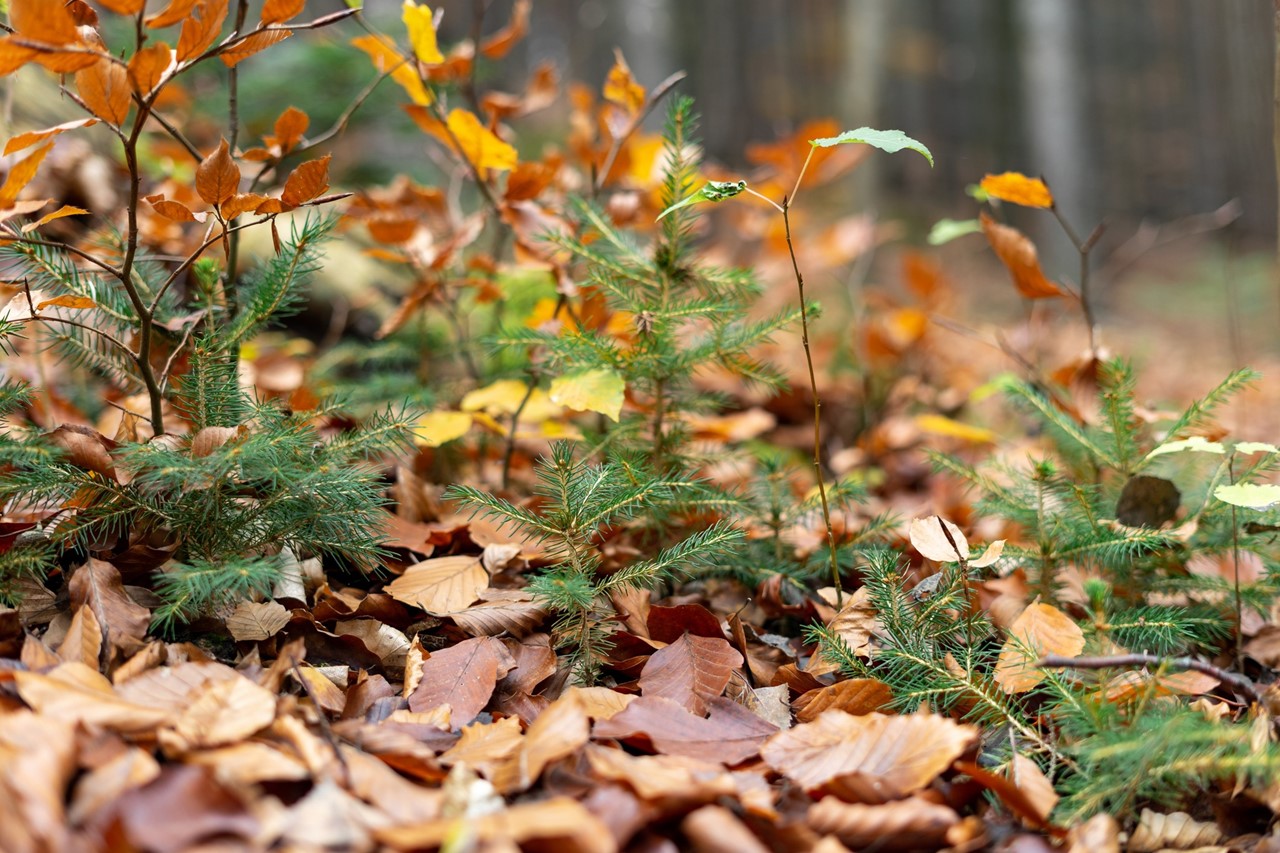< Back To Newsroom
VGP Tree-planting Day
November 24 2021
In the Czech Republic, the VGP Foundation supports a project around the stability of forest covers in the Liberec region (northern part of CZ), aiming to restore and increase the diversity in today’s often monocultural and even-aged forest composition.
The project is run by a local Foundation of Ivan Dejmal for nature protection (Nadace Ivana Dejmala pro ochranu přírody) which focuses on nature protection activities in the Czech Republic for already 28 years. Their vision is a pure, natural, diverse environment and responsible society with a sustainable approach to nature.
Increasing stability of forest covers in the Liberec region in 2021
The project's main goal is to plant mainly beech, oak, and fir trees in local forests to improve their age and species-diverse composition. An essential part of the project is also building fences around the newly planted seedlings protecting the plants from being eaten and damaged by wild animals, which are currently present in high numbers. The project has been running for 7 years now, and so far, more than 180 000 seedlings have been planted.
For a long time, there was the tendency of monocultural forest management with predominantly spruce trees, and not only in the Czech Republic but in other countries as well. (You can read more about the situation for example in Bavaria.) With the current climate change and global warming, these conditions play into the hands of tree vermin, such as the bark beetle, which is consequently responsible for the loss of vast forest areas. When the trees lack a sufficient amount of water, they cannot produce enough substances to repel the insect and become vulnerable. The bark beetle larvae feed on the tree's inner tissue. Therefore, a new approach must be adopted to avoid the fast destruction of considerably large parts of forest covers through a more careful way of forest management.

© Jakub Trsek
That is why the Czech foundation encourages the efforts of bringing more variety necessary for long-term, more stable, natural, and healthier forests capable of better water retention in the landscape. In cooperation with a specialist on forest management Jan Duda (who is in charge of woodlands belonging to the local municipalities or the church), several locations were selected as suitable for the planting. In spring 2021, the seedlings were purchased and are currently being planted in newly built enclosed areas.
The realisation of the project entirely depends on public financial support. The director of the Czech foundation Ondřej Petrovský informed that thanks to the help from the VGP Foundation, they were able to double the number of seedlings within the project. Instead of the original 35,000, there are now 70,000 trees being planted into the Czech forests.
VGP Tree-planting Day
Together with a group of volunteers from the Czech branch of VGP, we did not only support the project financially, but also with our hands in the earth. On November 19, 2021, the team gathered in Kryštofovo údolí (Krystof’s valley), a picture-postcard village in the north part of the Czech republic famous for its Museum of Nativity Scenes, a remarkable railway viaduct or an astronomical clock. Equipped with warm working clothes, gardening gloves, warm tea, and enthusiasm, we set out towards the final location – a fenced area where we were supposed to plant around 300 fir seedlings.
The activity started with an introductory lecture by Mr Duda, who explained everything necessary about the given area. First, it was essential to clean out the place from fallen branches to create more space for the seedlings. With our group of 18 motivated volunteers, this was a matter of a few minutes. After this warm-up, we were thoroughly instructed in how to plant the trees to ensure their ideal conditions to take roots, and the real fun was about to begin. As you may guess, to plant a tree, you first need a comfortable hole in the ground. That may sound easy but in real life, not so obvious in the rocky terrain full of big roots. Fortunately, our strong volunteers proved their natural ability with mattocks even in the most challenging parts of the location. Making sure that the baby fir trees have enough space, we could plant around 250 seedlings in just a few hours.
Once we were finished, Mr Duda brought us to an informational excursion showing and explaining many interesting facts about the trees, wild animals, their symbiosis, and the importance of their balanced mutual interaction. Finally, after a well-deserved lunch and an additional presentation, we were ready to go home with a gratifying feeling and a very muddy smile after a job well done.
A big thanks to all those who participated and to our honourable partners for what they do for the environment. We are very proud to have been part of these efforts and hope to be able to employ our newly gained competence in the next tree-planting activity in the future.